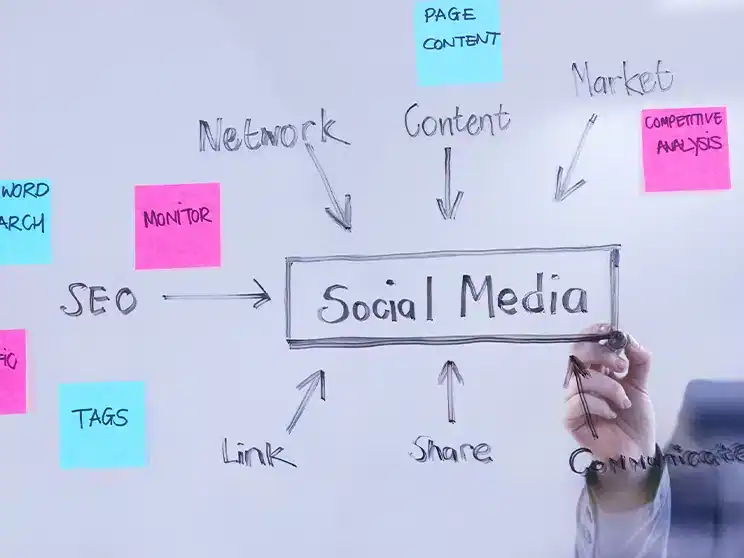Creating the Right Strategy Through the 4 Ps of Marketing
Updated: June 19, 2024
Published: May 3, 2023

A business needs to persuade customers to buy its products or services to succeed. Your marketing strategy is the key here, and perfecting this strategy for success requires understanding its intricacies — understanding the fundamental principles upon which marketing is built.
There are four principles to set your eyes on. Known as the marketing mix, the four Ps of marketing are product, price, place, and promotion. The connotative term “four Ps of marketing” is one of many theories through which business owners can make marketing management and campaigns more effective, hence it is important that you have a deep understanding of the elements that make it up.
A Guide to the 4 Ps of Marketing
Developed by Jerome McCarthy in 1960, the 4 Ps of business are intricately interlinked in a way that one complements the other in your interaction with your customers. They define how you serve customers, what you want from customers, where you want to meet customers, and why you are the best for customers. More specifically, these four Ps of business connote:

1. Product
The product relates to the goods and services you provide to customers. In the context of the 4 Ps, however, it isn’t enough that you have a product. You also need to
- Make your product unique
- Understand the product life cycle
You need a unique selling proposition (USP). A USP is what you provide that no other similar business does and, hence, what sets you apart from the competition. For instance, the USP of Apple products could be the seamless ecosystem that exists between devices, while for Samsung, it could be the unrivaled displays of its screens in the mobile market. The attractiveness of your USP determines how much of the market you get to capture, as well as how easy it is for you to do so.
In regards to the product life cycle, business owners should be concerned with how to keep the product relevant at all stages. You ensure the product or service is developed to satisfy an existing unmet need of customers, launched into the market at the right time, and continuously updated to maintain demand and prevent any decline in interest.
2. Price
Price is the monetary compensation you want from customers for giving them a product or service that satisfies their needs. The element “Price” is a result of the Price Mix, which is the value of the product determined by you, the producer. This evaluative model, although affected by other external elements like government regulations and demand, consists of four major components:
- Pricing objectives
- Competitor price
- Product cost
- Profit margin
For a simpler understanding, we will summarize these components into two categories; the perceived value of the product within its market and the actual cost of acquiring or manufacturing the product or service.
The perceived value of the product is what customers are willing to pay for it. It is the logical and emotional value of the product through the eyes of the customers and in comparison with similar competitors in the market. Demand is an important factor here, and pricing a product above its perceived value drives customers away while pricing a product or service below its perceived value results in opportunity costs as you make less money.
Take the competition between Coca-Cola and Pepsi for instance. Research shows 70% of surveyed customers perceive Coca-Cola to have more value than Pepsi, its closest competitor. This means, for its soda cans, Coca-Cola may comfortably set a price higher than that of a can of Pepsi but has to keep prices close to not lose customers. We see this slight difference in the $7.46 (coca-cola) and $6.18 (Pepsi) pricing of a pack of cans at Walmart’s online store.
In the second category of pricing, the focus is on generating profit for the business by taking into account the cost of acquiring or manufacturing a product. You consider the operating costs, fixed costs, variable costs, direct costs, and indirect costs associated with your product or service. You will also consider the government policies that control pricing.
The objective here is to determine a pricing strategy that ensures the revenue generated is higher than the total costs, thereby resulting in a net profit for your business. As expected, the perceived value of a product and its total costs work hand in hand to determine its appropriate price.
- The perceived value helps you determine a range for pricing that is attractive to customers.
- The total cost helps you determine the exact price required to make profits and meet your business’s financial goals.
3. Place
Place in marketing refers to the medium through which you reach out to customers and the location where customers have access to the product or services. Here, the overall success of your marketing campaigns depends on two elements.
- Finding the right channel to market to your target audience
- Identifying the best platform to sell your products to potential customers
For instance, if you sell digital art, it only makes sense that you reach out to your target audience majorly through online channels like social media and complete the sales of your art through online platforms like website landing pages.
In the same light, if you sell brand new luxury designer apparel in a rich neighborhood in Paris, you should avoid displaying your items on the street side. Why? Because this negatively affects the perception of your products as customers may assume them to be second-hand or even fake. Instead, you want to sell your items in a boutique.
You reach customers on channels where they are active the most and sell your products at locations customers expect you to sell from.
4. Promotion
Promotion relates to the advertising content or public relations required to spread awareness about the availability of your product. It involves reaching your target audience through marketing messages tailored for traditional mediums like television, radio, and print media, or messages tailored for more contemporary mediums like social media, SERPs, paid adverts, email, and other web platforms after learning the principles of marketing.
Effective promotion, to take it a step further, unites the previously discussed Ps together. Effective promotion involves messages that
- Acquaint customers with your product and its USP.
- Convince customers that your product is appropriately priced compared to competitors and its inherent value.
- It involves sharing your promotional messages with your target audience through online or offline mediums where you know they are active.

How to Utilize the 4 Ps of Marketing
The four Ps of marketing are useful for creating strategies for new products and also reevaluating strategies adopted for products already in the market. If you wish to build a software product, for instance, you apply the principles thus:
- Product: Create a software program that addresses a particular problem faced by a demographic. This would be a problem for which there is no reliable solution in the software market, and the solution you provide then becomes the unique selling point (USP) of your software product.
- Price: You consider how much it costs to build the software product. You also look into how much it will take to continuously maintain and update the software to remain relevant in its market. You identify the pricing range of your competitors and settle with a price that ensures your business makes a profit.
What if the final price doesn’t bring a profit? You simply look into your costs and how you can cut down on them.
- Place: If you expect your target audience to use the product on internet-enabled devices, you should understand that the best places for marketing and conversion channels are online platforms like email, social media, and your website. If the software product is a mobile application, you place it on the Apple Store or Google Play Store for mobile users to find and also purchase/download.
- Promotions: Promotions then involve combining the appropriate public relation content with elements of product, price, and placement. You curate campaigns that highlight your product’s USP and why its pricing is equitable. Utilizing data collected from target individuals, you then share curated messages with target audiences through the appropriate marketing channels.
The 5 Ps of Marketing
Sometimes, you may come across the “five Ps” of marketing, which is a similar theory that incorporates one more element into your marketing strategy. The element “People” focuses more on the customers. It is concerned with how tailoring marketing strategies to customer behavior, experience, and satisfaction affects the success of your business.
- In our example, “People” within a marketing strategy entails utilizing customer relationship management workflows and tools. Business owners use these to study customer trends, collect customer complaints, make changes, and then evaluate customer reactions to these changes that have been made to the software. You can also ensure customer satisfaction by ensuring seamless customer servicing.
Some Other Marketing Theories You May Come Across
There are over 10 marketing theories just like the four Ps and five Ps that you can utilize to improve your marketing campaigns. Some of these include
- SWOT Analysis
- The 8Cs of marketing
- The Strategic Matrices of Ansoff
- The PESO Model
- Maslow’s Hierarchy of Needs
- Howard-Sheth Model of Consumer Behaviour
- PESTEL Analysis
- Copeland’s Classification of Goods
- The Communications Mix
- The Hierarchies of Advertising Effects
- Stakeholder Mapping
- Porters and Boston Consulting Group Matrix
- The Marketing Environment Theory
- The Trickle Down Principle of Fashion Diffusion
- The 8 Cs of Marketing
- RABOSTIC Planning Model
SWOT analysis, for instance, is a theory that stands for Strengths, Weaknesses, Opportunities, and Threats. It is a theory that helps you identify the internal and external factors that define your business’s competitive standing and potential for growth.
- Strength represents the internal offerings or features of your business that competitors don’t have.
- Weaknesses in marketing are what the competition excels at, which are areas you need to improve on.
- Opportunities refer to external market factors or changes that allow you to capture more market share.
- Threats are risk factors that reduce your business’s profitability.
The 8 Cs of marketing is a more comprehensive approach to the marketing 4 Ps.It originates from Koichi Shimizu’s 7Cs of Compass Model which builds on Robert Lauterborn’s 4-C marketing mix. The 8 Cs comprise:
- Cooperation with stakeholders
- Commodity (product)
- Cost
- Channel for transportation
- Communication (Promotion)
- Consumer Needs
- Circumstances (External factors)
- Convenience(Placement according to the 4-C model)
A business can identify its SWOT through in-depth analysis, and then incorporate findings through the 4 Ps or 8 Cs to bolster social media marketing strategies, for instance, and improve its chances at success.
The Lowdown
The 4 Ps of business are four elements that work together to perfect your marketing strategies. In-depth knowledge of your product, price, place, and promotions helps you understand your target audience, create compelling products, set appropriate pricing, and distribute products through the right channels. You effectively promote your product’s offerings and drive sales for your business.
UoPeople offers more in-depth courses and resources through which you can learn the principles of marketing and other areas of marketing management. Are you ready for an online learning journey toward market domination? Contact us or check out our academic programs today to get started!
